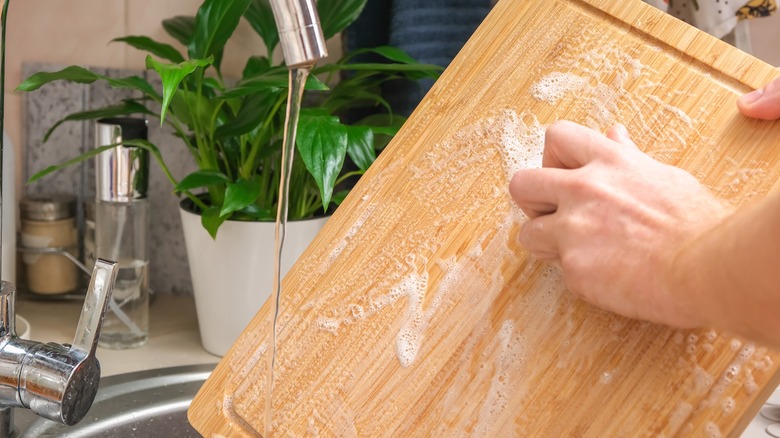Why You Need To Stop Soaking Greens In Your Kitchen Sink
Food safety might begin on the farm, but it definitely doesn't end there. In fact, consumers have just as great of a responsibility to minimize the risks of foodborne illness from the moment they bring home fresh goods. That said, one of the greatest ways of doing that is by properly cleaning produce. Sometimes this is easier said than done. Leafy greens can be one of the most challenging vegetables to wash, as certain varieties can be quite delicate. But, while you might typically think that giving them a soak (say, in the sink) is the best way to fully clean the leaves, that's not exactly true.
As obvious as it may sound, washing leafy greens is a must because it helps remove any excess dirt, insects, or debris, and reduces the number of lingering germs. Despite the fact that ready-to-eat lettuce can be enjoyed without a second thought, the same can't be said for unwashed greens. Yet, of the many lettuce-cleaning do's and don'ts, you might be surprised to learn that the classic method of plunging greens into the sink is actually the worst way to wash the produce, and here's why.
Kitchen sinks are riddled with bacteria
Do not — we repeat — do not soak greens in the kitchen sink. A surefire way to ensure the spread of bacteria, the U.S. Centers for Disease Control and Prevention (CDC) explains that while soaking in a bowl can cause germs to spread between leaves, soaking in a sink renders the situation exponentially worse.
Based on how frequently your kitchen sink is used to thaw meats and clean contaminated cutting boards that could be laced with harmful contaminants like E. coli and salmonella, it's one of the most germ-infested spots in your home. With nearly 20,000 bacteria per square inch and plenty more lurking around the tap and handle, CNN shares that your kitchen sink is nowhere near as clean as you think it is. Unsurprisingly, rather than have greens bathe in bacteria, this is precisely why you should refrain from soaking them in there.
Instead, the best (and safest) way to wash greens is simply by rinsing them. Starting with clean hands, remove the first outer layers on tightly-packed greens along with any wilted or discolored leaves. Then, without overthinking the process too much, rinse leaves under a steady stream of cold water. Simple and super effective, a cold rinse is leaps and bounds better than the standard kitchen sink soak.

